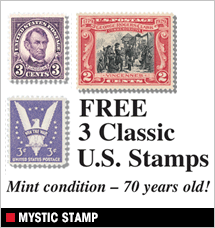
 Asia is the new hot spot for international travelers. There are World Heritage Sites, diverse cultures, great food, friendly people and an infrastructure that makes it easy to get from one country to another.
Asia is the new hot spot for international travelers. There are World Heritage Sites, diverse cultures, great food, friendly people and an infrastructure that makes it easy to get from one country to another.
- Getting there: Check airfare to many locations to find the least expensive entry into Asia. The shortest flight is not always the least expensive. Once in Asia, check one of the many low-cost carriers like Airasia to connect from one location to another. With low-cost carriers, book baggage online – it is less expensive.
- Visas: Check the embassy of the countries you will visit to find out what you need for entry. You will need a passport that will be good for six months from your entry date. Some cities in China now offer a 72-hour visa free stay and Myanmar now has an online e-visa. Each country is different.
- The International Dateline: The International Date Line is another thing that can cause brain damage just thinking about it. This is most important when booking accommodations for the first night. The day you lose on the way to Asia you will get back on the return.
- Jet lag: Flights to Asia can vary from 12 hours to 30 hours. For the smoothest transition nap on the plane, and when not napping walk around. Don’t plan too much the first day. Spending some time outdoors helps to adjust one’s biological clock. Stay on local time not your at-home time.
- Accommodations: Chains most North Americans are familiar with are found throughout Asia. The benefits are the ease in booking, gaining customer loyalty points toward future stays, and knowing what to expect.
- Tours: Book tours locally. The Hong Kong tourist board site offers wonderful free or almost free tours (www.discoverhongkong.com/us -search “kaleidoscope”). Check out the Global Greeters Network (www.globalgreeternetwork.info). They offer free tours in many cities worldwide. It is a good way to make a local connection.
- Food: There is a wonderful diversity of food in Asia. Visit a wet market to learn about fruits and vegetables seldom seen in North America. A great way to enjoy local foods and interface with the people can be had by signing up for a cooking class. You are less likely to have tummy issues if you eat what the locals eat.
- Money: Credit cards such as Visa and Mastercard are accepted just about everywhere. To unravel the exchange rates go to www.oanda.com/currency/travel-exchange-rates and print out Cheat Sheets to take with you. A coupon folder is a great way to organize money from a variety of countries.
- Language: English is the international language of travel and spoken in nearly all the tourist areas. However, learn how to say “Hello” and “Thank you” in the local language and you will get a smile in return. When out and about have someone at the hotel write the hotel’s name and your destination in the local language.
- Tipping: Tipping can be very confusing and the best thing to do is ask at the hotel. Even countries like Australia and China where tipping is not common are beginning to expect tips from North Americans. Do not give money to beggars and street people.
Be aware of cultural difference. Modest attire is required in most places of worship and shoes usually left outside. In most countries it is rude to touch someone, even children, on the top of their head. Relax, enjoy, observe, and don’t expect everything to be like it is in North America.
Sandra Scott travels the globe recording the top attractions at every destination.
Copyright © 2024 Go60.us. All Rights Reserved.



























































